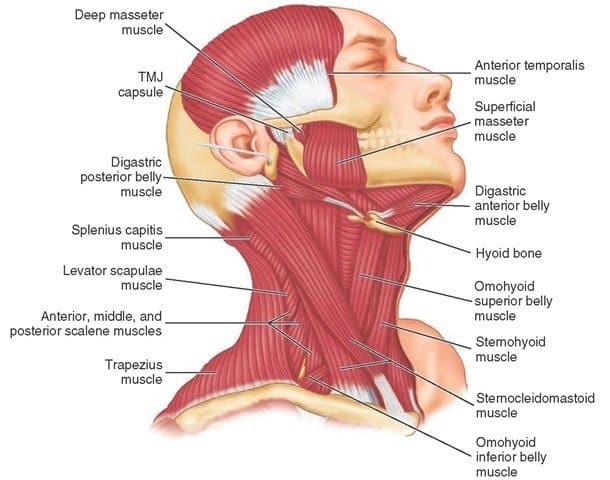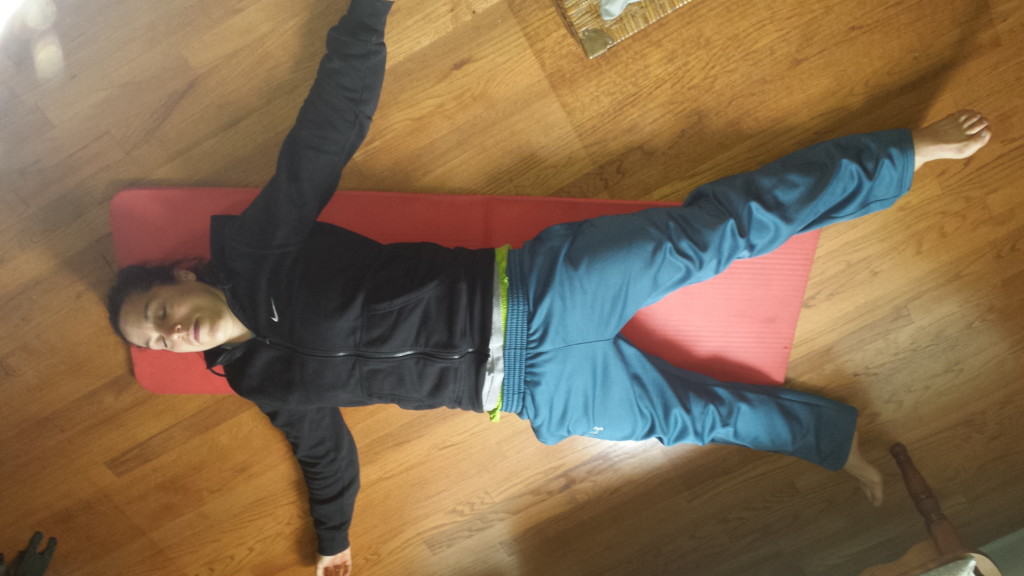
Relaxing the Neck (part 1)
The reason so many have so much trouble with the neck is that it’s asked to do everything. It holds up our head, pulls together upper back posture, leads almost every movement, and serves as the base for almost all sensory input — the head. Because of this almost constant impetus to be ‘on, it has difficulty turning ‘off’. No rest means constant tension, and constant tension often reveals itself as pain. It’s an influential player that can take over if you let it. A neat little assessment to test the level of neck dominance is the neck extended fold-up:
If you can’t separate the neck from the core in a stripped down flexion movement, the neck doesn’t know how to relax.
To relieve neck tension, a good start is to deaden the entire body.
Using deep belly breaths and attempting to slow down your breathing and heart rate, alleviate any points of stiffness. Give yourself the time to let this happen and acknowledge what ‘relaxed’ feels like.
From here, let your hand guide your head as if it was a marble on the floor:
Credit to Todd Hargrove for mapping out this move in A Guide To Better Movement.
It’s actually quite hard to not let yourself help or anticipate the rotations. Ideally, you could perform this with a partner gently manipulating your neck so you can keep yourself fully relaxed (getting the hand/arm involved tends to light up that side of the neck), but performed solo it is a practice in constraint and control.
A prone version utilizes the deep flexors in the rotation process:
Chin retraction against gravity with the forehead rested distracts the deep flexors from responsibilities in the frontal plane. They are freed to lead rotations, reminding them they can do multiple things and breaking the reinforced pattern of holding the head upright.
The face down position also provides a great platform in which to separate the neck from shoulder retraction. The following progression reflects my piecing together of Dr. Andreo Spina’s prone shoulder retractions and rotations:
Again, in keeping the neck relaxed when performing these arm/shoulder movements, we are re-patterning motor control. The neck needn’t be involved with these.
- Shoulder retraction off floor (isometric)
- Shoulder retraction with hand/arm raise (isometric)
- Arm raise into hands behind head, elbows bent (rotary control)
- Hands behind head to hands behind back, elbows bent (rotary control)
- Elbows up, arms bent behind back to arms long, hands overhead (rotary control and isometric)
- Hands overhead to hands at sides, arms remain long (rotary control and isometric)
Another method to facilitate relaxation is to excessively turn muscles ‘on’ so they can be turned ‘off’. An example of this concept is supported neck extensions:
Pinching/ pain at the back of the neck with extension is likely due to the deep flexors not being able to relax or let go. Minimize the perception of threat by sinking the neck into the shoulders for support. You should be able to extend a few more inches just from this buttressing. Imagine you have a pencil placed at the top of your neck/base of your skull. The goal is to crush it with everything you got. This maximal contraction should engage the strong deep flexors to join in on the movement. USE ALL THE MUSCLES ENGAGED IN EXTENSION TO FLEX THE HEAD BACK FORWARD. Same pencil crushing analogy, but at the point where the neck hits the underbelly of the chin. It is important to note that the neck remains vertical in this movement. Only the head drops back and forth.
Finally, always look at the joints above and below when sourcing neck issues. The neck will easily pick up movement lacking at the mid-back, and the jaw is also amazingly related:
TO REVIEW:
- The neck is involved with a lot of movement, sometimes too much
- Excessive use of the neck leads to excessive tone which leads to limited neck movements and pain
- Relaxing the neck is most efficiently achieved by relaxing the entire body
- Neck movement without the use of neck muscles = movement without tone = relaxation
- Resting the head and neck when doing shoulder retractions/rotations re-programs the brain to not use the neck when performing these movements
- Further turning muscles ‘on’ through heightened contraction helps re-establish the on-off neural relationship, turning muscles ‘off’
- The neck is influenced by it’s surrounding joints and musculature – most notably the mid-back and jaw




